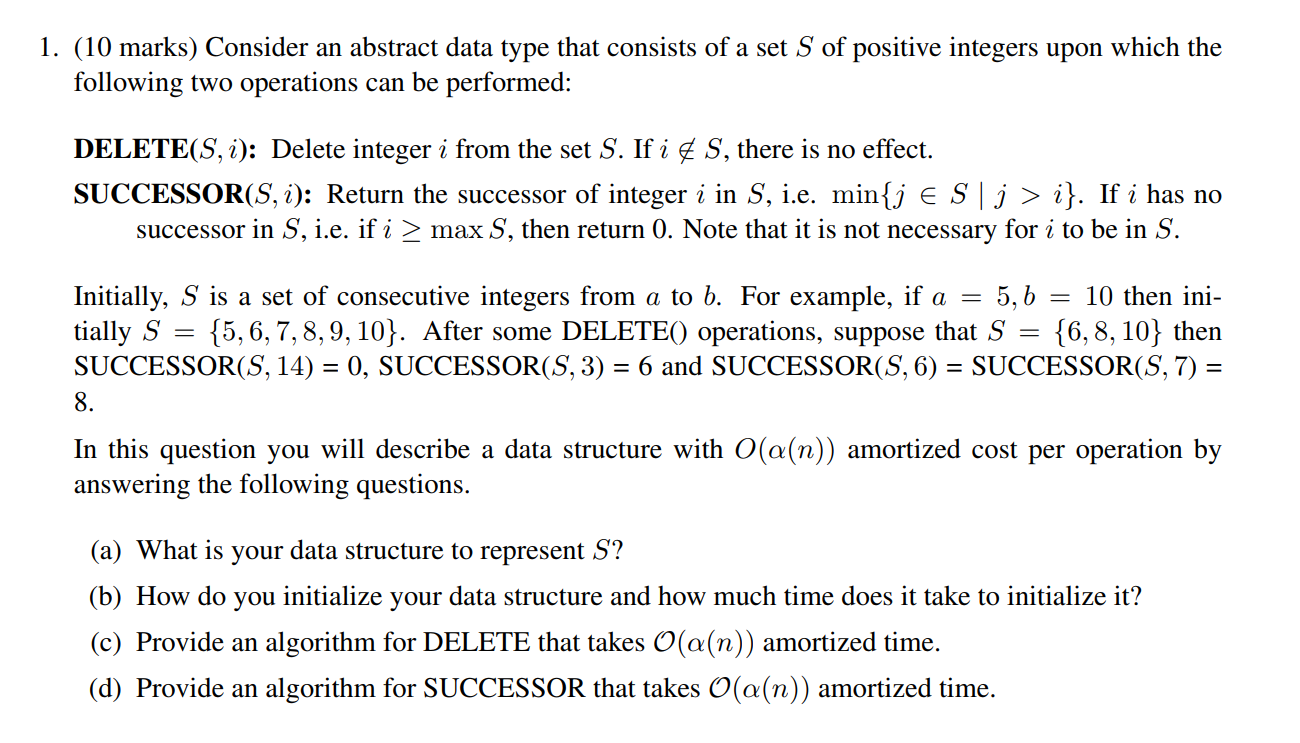
1. (10 marks) Consider an abstract data type that consists of a set S of positive integers upon which the following two operations can be performed: DELETE(S, i): Delete integer i from the set S. If i S, there is no effect. SUCCESSORS, i): Return the successor of integer i in S, ie. minU s i j i). If i has no successor in S, i.e. if i 2 max S, then return 0. Note that it is not necessary for i to be in S Initially, S is a set of consecutive integers from a to b. For example, if a - 5,b - 10 then ini- tially S 15,6,7,8,9, 10}. After some DELETEO operations, suppose that S 16,8, 10} then SUCCESSORS, 14) 0, SUCCESSORS. 3)-6 and SUCCESSORS, 6) = SUCCESSORS, 7) = 8. In this question you will describe a data structure with O(a(n)) amortized cost per operation by answering the following questions. (a) What is your data structure to represent S? (b) How do you initialize your data structure and how much time does it take to initialize it? (c) Provide an algorithm for DELETE that takes O(a(n)) amortized time. (d) Provide an algorithm for SUCCESSOR that takes O(a(n)) amortized time 1. (10 marks) Consider an abstract data type that consists of a set S of positive integers upon which the following two operations can be performed: DELETE(S, i): Delete integer i from the set S. If i S, there is no effect. SUCCESSORS, i): Return the successor of integer i in S, ie. minU s i j i). If i has no successor in S, i.e. if i 2 max S, then return 0. Note that it is not necessary for i to be in S Initially, S is a set of consecutive integers from a to b. For example, if a - 5,b - 10 then ini- tially S 15,6,7,8,9, 10}. After some DELETEO operations, suppose that S 16,8, 10} then SUCCESSORS, 14) 0, SUCCESSORS. 3)-6 and SUCCESSORS, 6) = SUCCESSORS, 7) = 8. In this question you will describe a data structure with O(a(n)) amortized cost per operation by answering the following questions. (a) What is your data structure to represent S? (b) How do you initialize your data structure and how much time does it take to initialize it? (c) Provide an algorithm for DELETE that takes O(a(n)) amortized time. (d) Provide an algorithm for SUCCESSOR that takes O(a(n)) amortized time







